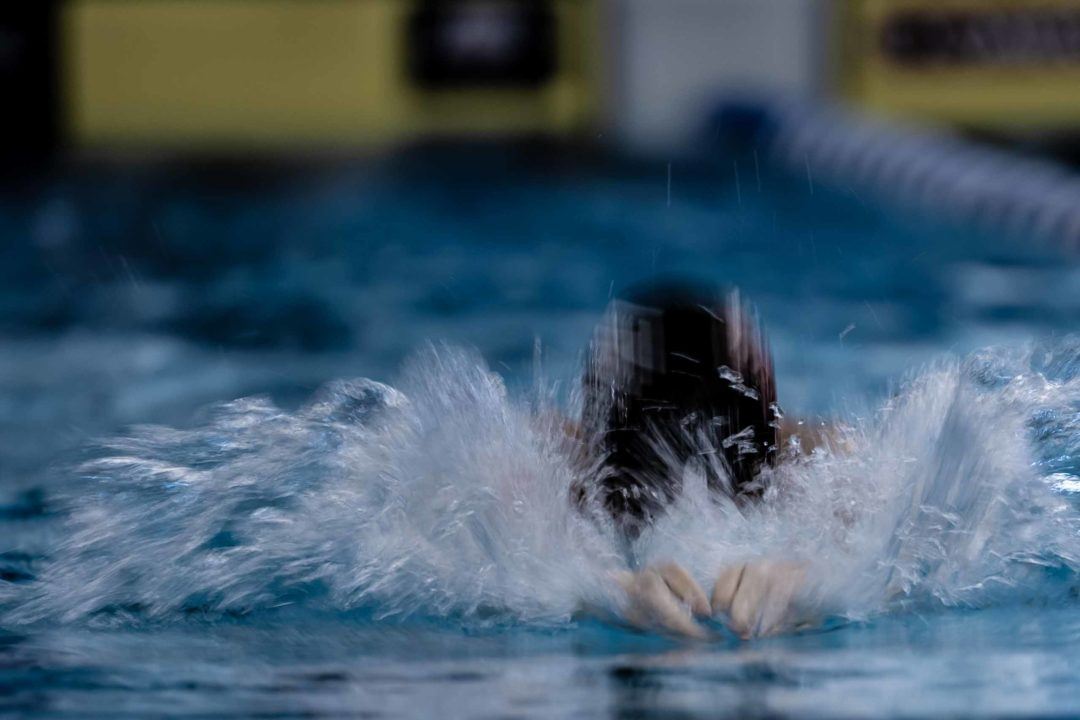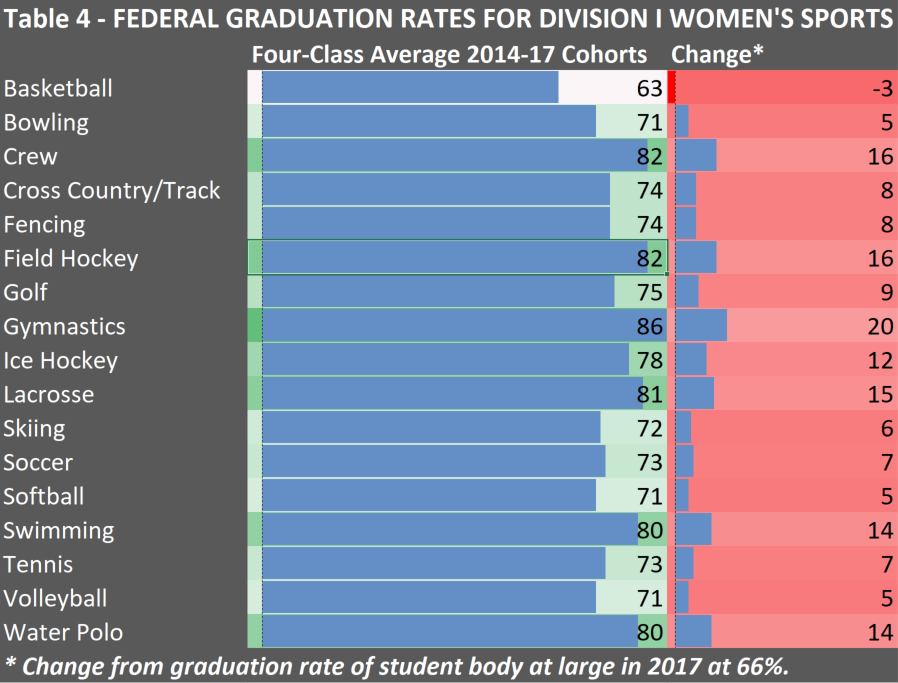SwimSwam welcomes reader submissions about all topics aquatic, and if it’s well-written and well-thought, we might just post it under our “Shouts from the Stands” series. We don’t necessarily endorse the content of the Shouts from the Stands posts, and the opinions remain those of their authors. If you have thoughts to share, please send [email protected].
This “Shouts from the Stands” submission comes from Komal Hatti, a mother of two swimmers at the Empire KC swim club, who wrote a version of the following data-driven business analytics paper for an MBA class last year:
Collegiate Sports as a Social Equalizer, a Data-Driven Perspective
As universities across the nation debate funding reductions to sports programs, a worrisome picture is starting to emerge. Near term impact of COVID-19 includes canceled scholarships for incoming freshmen, suspended practices, and uncertain future of college sports for the upcoming academic year. It is heartbreaking for athletes and families who worked so hard for so long, only to receive a crushing blow of canceled scholarships.
Lack of funding is an economic reality during the pandemic. However, we must not be short-sighted and hasty in eliminating programs that may have long term negative impacts. While participation in college sports gives a career boost to almost all athletes, it has been a game-changer for women and minorities. This article examines existing data and assesses co-relation between collegiate sports, academic and career success.
Introduction:
The study is broken into the following sub-topics:
- College graduation rate comparison for athletes and general population
- Graduation rate and revenue per type of sport
- Post-graduation career success
It is interesting to note that the sports have a strong and positive co-relation with graduation rate for socioeconomically disadvantaged sections such as Hispanics and African-Americans, as well as all women. It has no statically significant impact on the graduation rate for white men.
Type of sports and how lucrative it is also has a direct impact on graduation rate. Lastly, the data points to a very strong co-relation between collegiate athletic experience and career success for all participants. This relationship is exceptionally strong for women.
Graduation Rate Analysis:
The federal graduation rate for student-athletes1 is only two percentage points higher than the overall student body graduation rate, statistically insignificant increase. However, when this data is broken into demographics, a pattern emerges. For white males, who have enjoyed the highest socioeconomic status, the graduation rate is unaffected. However, for all other demographics including white women, the impact is heartwarmingly positive.
This variance indicates that participation in collegiate sports has an extremely positive co-relation for socio-economic groups who perhaps do not have the role models at home with graduate degrees. The pressure to maintain GPA and guidance from the college system help such students stay with the program and finish their degrees. An increase in self-confidence due to athletic performance is equally responsible for improved academic performance.
The strong graduation rate co-relation for disadvantaged groups is further evidenced by a review of table 22 below. The table compares rates for student athletes over 26 years’ time span. The graduation rate for white men has increased by 11 points and by 12 points for white females. However, for African- American men, this increase is 24 points and for African-American women, the increase is 22 points.
In other words, in 2017 the student-athlete groups were more likely to graduate compared to 1991 as follows: white men by 24%, white women by 18%, African-American men by 67% and African-American women by 49%.
Such positive co-relation between sports and socioeconomically disadvantaged groups persists across division levels. It is a very encouraging fact for students from socio-economically disadvantaged backgrounds. Participation in college sports significantly helps them attain a college degree.
Graduation Rate & Revenue Variance for Type of Sport
For men in Division I, gymnastics and water polo graduate you at 80%. Volleyball, swimming, lacrosse, and fencing graduate you at 70-79% rate. The rate for popular sports like basketball, the rate is terribly low at 47%. Baseball and wrestling follow closely being, in the 50s. See Table 33.
For women in Division I, graduation patterns follow similar variance per sports as it is for men. They are at an average a few percentage points above men. See Table 44. The most striking difference, however, is that women don’t seem to have a certain group of sports that has a drastically lower graduation rate. They never go below 70% regardless of sports. Basketball is an exception with a 63% rate.
Unfortunately, for Division II colleges too, men’s’ wrestling, football and basketball suffer a similar trend of significantly lagging behind in graduation rate. Perhaps not surprisingly, the graduation rate for Division II women is not really affected by the type of sports. A very similar trend is seen by observing data for division III colleges.
The data indicates negative co-relation between popular and lucrative sports such as men’s basketball and football. Looking at the table below indicating average revenue for Division I sports, it is no surprise that student-athletes in football and men’s basketball are under tremendous pressure to perform in the field. The academics have to take a backstage, unfortunately.
Post-Graduation Career Success
As a result of life lessons such as work ethic, learning to handle failure and leadership skills that sports teach you, it is not surprising that athletes find career success more easily than their non-athlete counterparts, as noted below:
- Former athletes earn about 5-15% than non-athletes, an advantage that doesn’t exist for any other extracurricular activity.
- While athletes overall generally fare better than their non-athlete counterparts, female athletes have the biggest advantage of all. Below are the results from a survey of female executives:
- 74% – respondents say a sport background can help accelerate a woman’s career
- 61% – believe sporting involvement has contributed to their own career success
- 94% – of women in the C-suite played sport
- 52% – of women in the C-suite played at a university level
These numbers are significant for women. According to a research conducted by ESPN, the following reasons explain why female athletes make great leaders:
- Sport participation helps girls grow up healthy and confident
- Sport experience helps young female leaders rise
- Sport backgrounds help C-suite leaders succeed
Epilogue
As a progressive, wealthy society, we will fail large sections of the youth if we deny them the opportunities that collegiate sports only provides. As we navigate the global pandemic and hopefully soon return to a new normal, we must remember how much some of us depend on these opportunities to break into the coveted middle class. Significant increase in graduation rate for minority student-athletes vs. their non-athlete counterparts as well as a strong showing of women with sports background speaks for itself.
1 Comparison of federal graduation rates between student-athletes and student body for select groups in 2017 graduation cohort.
2 Comparison of federal graduation rates from 1991 and 2017.
3 Federal graduation rates for Division I men’s sports.
4 Federal graduation rate for Division I women’s sports.
References:
http://www.ncaa.org/about/tracking-graduation-rates The NCAA provides a searchable database of every school’s GSR report.
Do High School Athletes Get Better Grades During the Off-Season? http://journals.sagepub.com/doi/figure/10.1177/1527002514566279?
NCAA Should Bar Low Graduation Rate Schools From March Madness https://www.usnews.com/opinion/articles/2010/03/15/ncaa-should-bar-low-graduation-rate-schools- from-march-madness
KU Student-athletes post record-setting semester in classroom https://kuathletics.com/news/2017/6/19/academics-ku-student-athletes-post-record-setting-semester- in-classroom.aspx
6 reasons former athletes find success after college http://usatodayhss.com/2017/6-reasons-former-athletes-find-success-after-college
https://universitybusiness.com/covid-19-and-the-future-of-college-sports/
https://www.spokesman.com/stories/2020/apr/17/financial-implications-of-covid-19-leave-athletic-/






Thanks for putting that together, very interesting read. One stat I’m a little skeptical of is the earnings one – if it factors in professional sports then it may be very skewed because of the multiples over “normal” wages many make (as an example, LSU alum players earned $630 million in the NFL last year). Would be better to see those stats broken out by sport.
Thanks for reading. I didn’t gather earnings data. The post career success stats (5-15%) came from ESPN. The stats before that came from NCAA which are fairly detailed and I was able to analyze them.
Great article. Some very eye opening statistics.